
Welcome back to the weekly appointment where we virtually build your custom PC together. After talking about budget and processors, let's move on to the motherboard.
ALL EPISODES:Chapter 1: Guide to building your assembled PC: THE BASICS
Chapter 2: Guide to building your assembled PC: PROCESSOR AND HEAT SINK
Chapter 3: Guide to building your assembled PC: THE MOTHERBOARD
Chapter 4: Guide to building your assembled PC: RAM, HDD and SSD M.2
Chapter 5: Guide to building your assembled PC: THE VIDEO CARD
Chapter 6: Guide to building your assembled PC: THE POWER SUPPLY
Chapter 7: Guide to building your assembled PC: THE CASE
What is the best board for surfing in play and work?
Known by more names than the last Brazilian football champion, the mainboard, motherboard, MOBO, system board or more simply motherboard, is the component of the PC that allows us to host and hook all the others. In short, call it what you prefer, but the mainboard allows us to communicate all the computer hardware, a real traffic light (often RGB too) which, in its streets made of circuits, collects all the information, takes it to the processor. and from this back to the peripherals.
In fact, the motherboard does not generate performance, but simply makes the best possible infrastructure available to our computer hardware to make the most of its features.
Let's take a closer look at it to understand how it works.
ROM, RAM, CHIPSET AND SOCKET. For me a mixed salad instead, thanks.
Of course, those approaching this world for the first time may not even be comfortable with so many terms and acronyms; at first glance it may seem like a very intricate tangle of circuits, but as we get closer and endow ourselves with the right amount of patience, we will discover that each part is different from one another and has a specific function.
Already covered in the previous article, but useful to review now, let's talk about socket and chipset.
The first derives from the English term "cavity" or "socket", that is the part where the processor will be positioned which has different measures and specifications, depending on the model and manufacturer. The socket is made up of ends perfectly aligned with the contacts on the back of the processor to allow communication and the exchange of power. The chipset, on the other hand, it represents all those roads I was talking about before, roads that lead to the processor and all those elements that define its characteristics and peculiarities.
These two elements therefore allow us to define and choose the right motherboard for our processor, bearing in mind that different chipsets can integrate the same socket; starting from the processors discussed above, for example theIntel i3 8350K attaches to socket H4 - LGA1151 and falls within the chipsets B360, H310, H370, Z370 e Z390, just to mention the most recent. In addition, the socket also defines compatibility with heatsinks that will hook onto the motherboard in those 4 holes around the processor.
In the specifications for example ofARCTIC Freezer XTREME, mentioned last week, we can see how it is compatible with many Intel sockets (2066, 2011 (-3), 1150, 1151, 1155, 1156, 1366, 775), but also with most of the AMD ones (AM4, AM3 (+ ), AM2 (+), FM2 (+), FM1, 939, 754).
Having made this necessary premise, your master Splinter will explain to you ninja more quickly the other parts, equally important, but less binding in the choice of processor / motherboard: COWABUNGA!
We have first of all the expansion slot, that is, those ports where we can connect components such as RAM, sound cards, video cards and in the more recent boards the housings for SSD M.2 sata o NVMe. While the RAMs have a universal connector and normally accommodate almost all types of memory (but always check the compatibility on the MOBO specification site), for the other expansion cards there are different ports PCI Express (or PCIe) which are defined as x1 x4 or x16 depending on their size and range of information for the processor. Video cards, for example, connect to x16 ports, which are the largest and most powerful.
We then have the interfacce drive, that is the ports for the communication of SSD (Solid State Drive) or mechanical Hard Disks. By now the standard is that of Serial ATA in its third evolution (practically a third level Super Saiyan!), And allows communication between disks and system of about 600MB per second.
Continuing we find the power connectors, thanks to the sky always universal, that is the 8 pin for the processor (which on some particularly energy-intensive models become 16) and the classic 24pin that gives current to the whole motherboard, one of those connectors that has lasted longer and is hear who writes to you a little less old than he is!
In the lower part we usually find the connections with the front panel, such as the audio jack which usually sits at the top of the case and adjacent to it USB ports. Although each is different from another and has a printed wording, for all these doors I strongly recommend you to read the instruction booklet, because not even the Oracle of the Matrix would be able to tell you exactly the right order of the PINs for the reset, the start and to the HDD led: may the force be with you!
On the back we finally have all the external doors, that is, those where we can connect USB peripherals, the cable HDMI/VGA/Display etc if the processor has integrated graphics, the cable LAN for internet connection, i jack per l’audio in and out and much more and in some models also the predisposition for two wireless antennas!
Ok it's all ... no! I forgot the software part. You didn't expect that, did you ?!
Well yes, all motherboards have one small operating system and one CMOS battery that feeds them. Stored in the ROM (Read Only Memory) this little system is called Bios, and the board firmware and takes care of carrying out basic instructions for launching the actual operating system, such as giving an order to the connected disks and verifying that all the hardware communicates correctly with the computer. In the most recent versions, a slightly more human and pleasant graphical interface has been studied; this type of Bios is called UEFI bios. To give you an idea of the very light step:
And the dimensions? Quiet don't count!
The last discriminating factor to choose your motherboard and to understand how much space to make on your desk is its size. The main cuts are 4, from the largest to the smallest we have: EATX, ATX, Micro ATX e Mini ITX.
What can vary from one model to another is not the compatibility or the power (for example we can use a very powerful processor even on Mini ITX cards, if supported by the correct chipset) and not even the area of use, given that for gaming o work a MOBO can accommodate the same components, but only the size we want to give to our PC and some other small details.
In formats EATX for example we have the possibility to insert even two processors and have a significant increase in performance (“fuu… siooo…. neee !!” and down to slapping with Majin-bu!). The format ATX is by far the most common, but if you don't mind sacrificing some USB ports or some PCI lines, you can also opt for one Microphone or a Mini. The important thing is that you keep in mind that the choice of the mainboard because in addition to coupling with the processor, it must also be thought of according to the case: the EATX formats are coupled to the houses full tower, to the ATX models those mid tower and smaller ones i micro tower and mini houses for mini PC.
Okay, now that we are more erudite than Gandalf the magician and our patience is lower than that of Magneto (who are the same person) let's go immediately to see our advice divided by price ranges, to be associated with the processors we have seen in the previous guide.
Configuration from 500 € -The hawk and the hunter
In this price range we have chosen the Gigabyte B450 AORUS M for AMD sockets and the Asus PRIME B360M-K for Intel, two low-end cards, but with everything you need to get started with sprint.
La AORUS in fact represents the Gigabyte gaming range, here in the Micro ATX form factor but with some really excellent features, such as the presence of an HDMI port on the back, an excellent heat sink for the heat generated by M.2 SSDs, 4 banks for RAM memories, far from obvious in this range and above all the B450 chipset that will allow you to use first or second generation Ryzen processors, without having to update the Bios, as recommended Ryzen 5 2400G.
And let's face it ... like all AORUS, this one also winks a lot at gamers, and we find a good number of RGB connectors for our 5 or 12 volt compatible strips or fans, which can be controlled with proprietary software RGBFusion.
For its part, however, the PREMIUM is one of the best Micro ATX that you can choose around the Intel B360 chipset: a fair number of USB ports (2 × 3.1 Gen.2 - 2 × 3.1 Gen.1 and 2 × 2.0 for a total of 6), excellent materials adhering to the standard 5X Protection III, a very well maintained Uefi Bios and a very wide compatibility with third-party hardware. In short, everything you need to support thei3 8350K to the best.
Discount
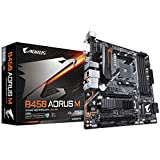 Gigabyte B450 AORUS M Scheda Madre, Socket AM4, DDR4, M.2,...
Gigabyte B450 AORUS M Scheda Madre, Socket AM4, DDR4, M.2,...
- ATTENTION! Check if your components (RAM memories, processor) are compatible with this motherboard before ...
- Supports AMD Ryzen 5000 Series / XNUMXrd Gen Ryzen / XNUMXnd Gen Ryzen / XNUMXst Gen Ryzen / XNUMXnd Gen ...
- Unbuffered non-ECC dual channel DDR4, 4 DIMMs
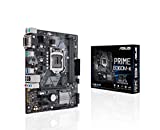 ASUS Prime B360M-K Intel B360 Motherboard with Illumination ...
ASUS Prime B360M-K Intel B360 Motherboard with Illumination ...
- ATTENTION! Check if your components (RAM memories, processor) are compatible with this motherboard before ...
- LGA1151 socket for 8/9 generation Intel Core desktop processors
- OptiMem: optimizes memory overclocking and stability thanks to the isolated PCB and excellent management of ...
Configuration from 1000 € - Master and Commander
In this configuration we can afford not one but two jumps, immediately leaving out the mid-range of the market and going to position ourselves directly in the top range of the mainstrem segment, that is the one covered by the chipset. X470 for AMD e Z390 per Intel.
In fact, our choice fell on the very solid one Asrock X470 Master SLI and on performing MSI Z390 Gaming Plus, two cards ready to amaze.
The Master SLI, as its name suggests, is designed for one configuration SLI, that is a PC with dual video cards; the result is excellent performance and sturdiness given by the materials and engineering truly at the top of the category. The selection of ports is excellent and there are in addition to 7 USB 3.1 ports also a Type-C port and a Gigabit LAN. Thanks to technology AMD StoreMI it will be possible to combine the speed of the SSD with the capacity of the HDD and with ASRock Polycrome Sync we could control the RGB addressables connected to the headers on the card.
The Z390 chipset is the new release for Intel 9th generation processors and this Gaming Plus is definitely a good solution to fully enjoy it. Featuring a very aggressive black and red design, this mainboard has everything you could want: excellent construction and dissipation, technology Twin Turbo M.2 and declared performance of 32Gb / s with Intel Optane memory and support for DDR4 RAM up to 4400MHz in overclocking.
And if you want to switch from Super Saiyan to God mode ...
Configuration from 2000 € - Beauty and the Beast
With this budget we will be able to simply afford the top and access the so-called enthusiast segment of the market. For AMD we offer the beautiful Gigabyte X399 AORUS PRO, a card that in addition to all the features of a high-end one, gives us the ability to host 8 DDR4 RAM slots and up to 4 multi video card configurations connected in parallel according to the standards AMD Cross Fire o Nvidia SLI, but above all the support for processors Ryzen threadripper such as 1950X previously proposed.
For Intel we stay this time on a Z390 with the ASUS ROG XI HERO, a superior category card thanks to an excellent and customizable cooling by Uefi bios. Integrated DAC for high-class audio, LED control with Aura sync and presets targeted for gaming sessions; all this makes Maximus the perfect gaming companion for the most demanding gamers.
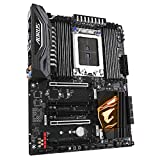 Gigabyte X399 AORUS PRO (rev. 1.0) scheda madre Socket TR4...
Gigabyte X399 AORUS PRO (rev. 1.0) scheda madre Socket TR4...
- ATTENTION! Check if your components (RAM memories, processor) are compatible with this motherboard before ...
- New Intel Mini-STX Form Factor
- Support Socket 1151 CPU type
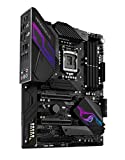 Asus Z390 ATX Intel ROG MAXIMUS XI HERO Scheda Madre Gaming...
Asus Z390 ATX Intel ROG MAXIMUS XI HERO Scheda Madre Gaming...
- ATTENTION! Check if your components (RAM memories, processor) are compatible with this motherboard before ...
- LGA1151 socket for 8/9 generation intel core desktop processors
- Diy friendly: pre-installed i / o cover, asus safeslot, asus rog technologies premium components for excellent ...
Okay, you've been waiting for it… there is still the ultra instinct level!
€ xxx configuration - The colossus and the titan
It would not even be necessary to talk about the characteristics of these two cards, because they simply represent the best the market has to offer:
ASUS ROG Zenith Extreme Alpha x399 e ASUS ROG RAMPAGE VI EXTREME x299
We have on both 5ghz AC wireless antennas, a small LCD panel that communicates the processor frequency, numerous temperature sensors scattered throughout the PCB for accurate heat detection and an extremely robust structure designed specifically for those who want to do overclock. Multi GPU support with 16 dedicated PCI lanes and RAM frequencies up to and beyond 4200mhz on Rampage.
In short, if you know what is missing, tell us!
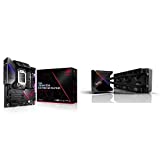 ASUS ROG Zenith Extreme Alpha Socket TR4 AMD X399 ATX + ROG...
ASUS ROG Zenith Extreme Alpha Socket TR4 AMD X399 ATX + ROG...
- ATTENTION! Check if your components (RAM memories, processor) are compatible with this motherboard before ...
- 1.77 "color OLED for real-time system statistics and custom logos or animations
- The built-in microfan helps to lower the temperature of the VRM and M.2 area by 20 ° C; Noctua Industrial fans ...
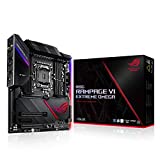 ASUS ROG RAMPAGE VI EXTREME OMEGA LGA 2066 Intel X299 ATX...
ASUS ROG RAMPAGE VI EXTREME OMEGA LGA 2066 Intel X299 ATX...
- 128GB Quad Channel DDR4-SDRAM
- ATX form factor
- Porte: 2 x USB3.1 Gen 2, 10 x USB3.1 Gen 1, 1 x ottico S/PDIF out, 1 x Clear CMOS, 1 x USB BIOS Flashback, 1 x modulo...
Ok, also for this third appointment we have concluded, see you next week where I will try to be a little less Jigglypuff, so as not to risk someone falling asleep on the keyboard!
See you always up here with the next article related to storage media hard drive, SSD e RAM!
It's women!


























